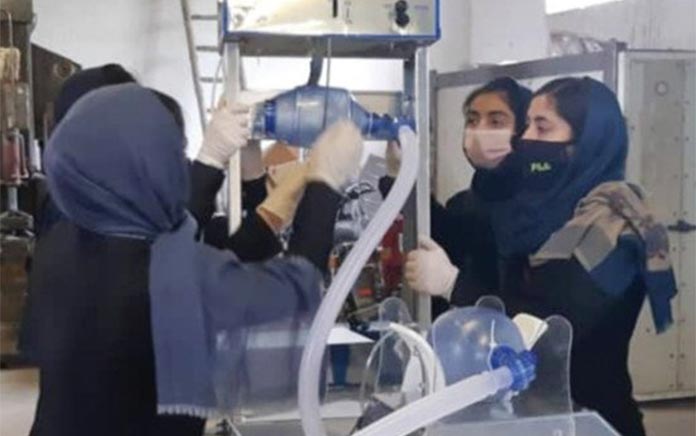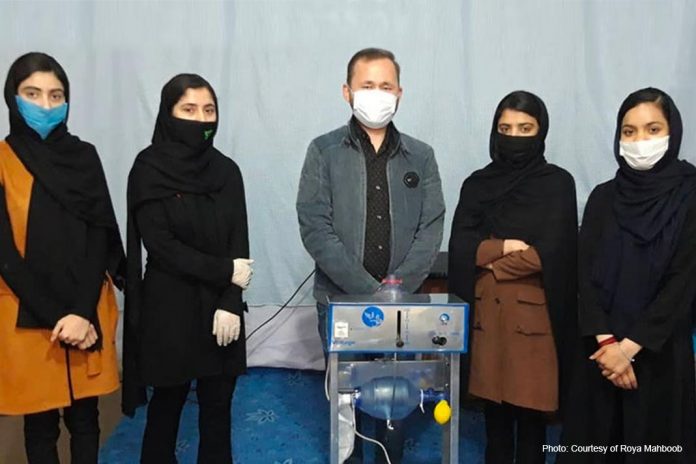What do you get if you combine a group of enthusiastic and talented female robotics students and a bunch of car parts? Ventilators to help fight the coronavirus, that’s what!
In Afghanistan, where resources are limited at best, the Afghan Dreamers robotics team got to work after hearing a plea from the governor of Herat province and discovering that the country’s two hospitals designated to deal with cases of Covid-19 had just 12 working ventilators between them!
Website amightygirl.com reports that the region is anticipating a significant increase in cases with Afghan migrant workers returning from neighboring Iran, where the disease has been rampant.
In response to this desperate need, the Afghan Dreamers, who are based in the province, developed a ventilator prototype which costs under USD300 to make from easily accessed car parts.
 There achievement is all the more remarkable given that, according to UNICEF, approximately 3.7 million children are out-of-school in Afghanistan and, of those, around 60 per cent are girls.
There achievement is all the more remarkable given that, according to UNICEF, approximately 3.7 million children are out-of-school in Afghanistan and, of those, around 60 per cent are girls.
The Afghan Dreamers programme, which aims to promote female education and development, was founded by tech entrepreneur, Roya Mahboob, who says: “The only thing that we all want to do is help our people and our community. I work with the girls, but mostly to coordinate. They are the real heroes.”
There are currently 50 Dreamers aged 14 to 17 in the programme, which encourages participants to use their skills to help their communities.
The team in Herat looked at how they could help Afghanistan prepare for the pandemic. Captain Somaya Faruqi along with Dyana Wahbzadeh, Folernace Poya, Ellaham Mansori and Nahid Rahimi came up with the idea for a prototype that could mechanically squeeze an Ambu bag, a plastic pouch with a mask, that’s normally operated by hand, to help patients breathe.
Their initial advanced design was scuppered by the difficulty in obtaining parts from overseas. So, instead, they modified a design from the Massachusetts Institute of Technology using readily available parts from Toyota Corolla cars.
Mahboob explains: “We discussed our design with a professor from MIT and sent it. He wrote back to us saying that it was a clever design, but we would need to see if the system worked. We are hoping that with the help of MIT, we will be able to improve our model and make it ready for actual use by the end of May or June.
“The idea of these machines is that we use them for emergency cases, when there are no professional ventilators. If we don’t have access to anything professional, we can use these ones.”
Once completed the machine will need approvals from the World Health Organisation and Afghani authorities before it can be put to use saving lives.
For her part, Mahboob also hopes that the girls’ success will show people across Afghanistan the value of educating girls.


































